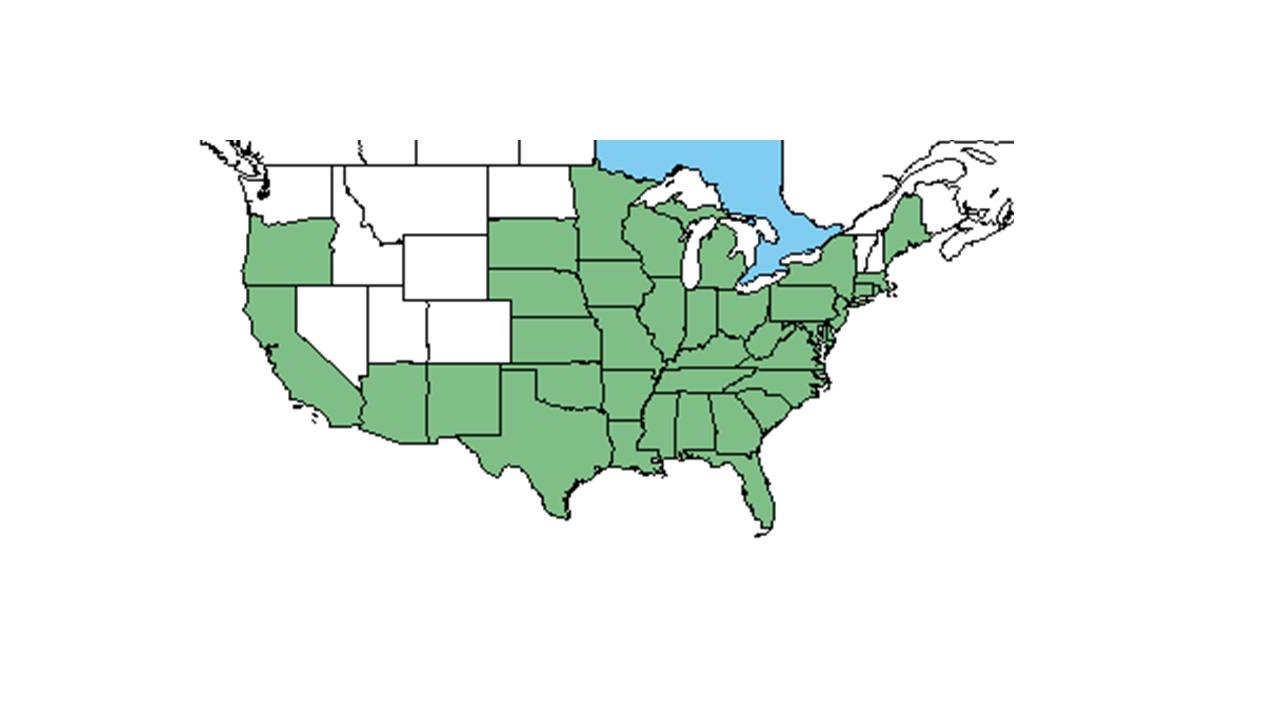Plantago virginica
| Plantago virginica | |
|---|---|

| |
| Scientific classification | |
| Kingdom: | Plantae |
| Division: | Magnoliophyta - Flowering plants |
| Class: | Magnoliopsida – Dicotyledons |
| Order: | Plantaginales |
| Family: | Plantaginaceae |
| Genus: | Plantago |
| Species: | P. virginica |
| Binomial name | |
| Plantago virginica L. | |

| |
| Natural range of Plantago virginica from USDA NRCS Plants Database. | |
Contents
Taxonomic notes
Common name: Virginia plantain
Description
Distribution
Ecology
Habitat
A natural community of P. virginica is a frequently burned mature longleaf pine-wiregrass community (FSU Herbarium). In human disturbed areas it has been documented to grow in a mowed grassy roadside, old biocontrol plots, and a lawn near a T.V. tower (FSU Herbarium). It has been observed growing with Pinus palustris and Aristida (FSU Herbarium). It is known to grow in loamy soil and sand of disturbed roadsides (FSU Herbarium).
Phenology
It has been recorded to bloom in March, April and December (FSU Herbarium).
Seed dispersal
Seed bank and germination
When exposed to natural seasonal changes, buried seeds of P. virginica exhibit an annual conditional dormancy/non-dormancy cycle (Baskin et al. 2003). Dormancy is broken in the summer, with the germination season extending from September to November (Baskin et al. 2003). Peak germination for P. virginica occurs in October (Baskin et al. 2003).
Fire ecology
Pollination
Use by animals
Diseases and parasites
Conservation and Management
Cultivation and restoration
Photo Gallery
References and notes
Baskin, C. C., J. M. Baskin, et al. (2003). "Seasonal changes in the germination responses of buried seeds of three native eastern North American winter annuals." Plant Species Biology 18: 59-66.